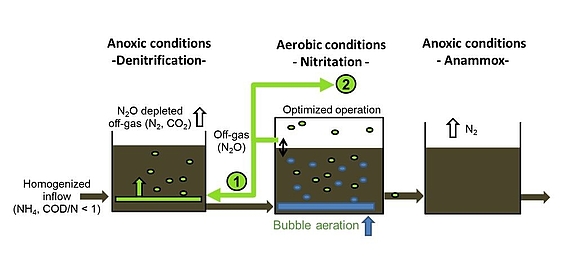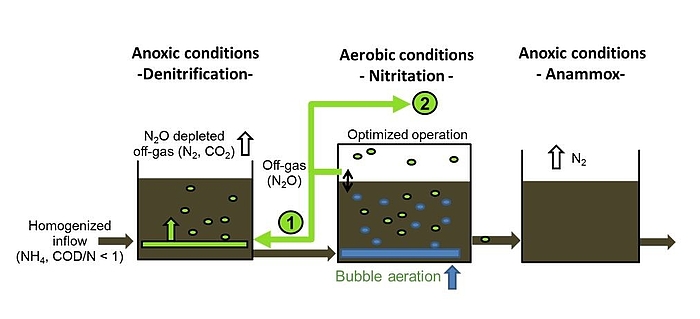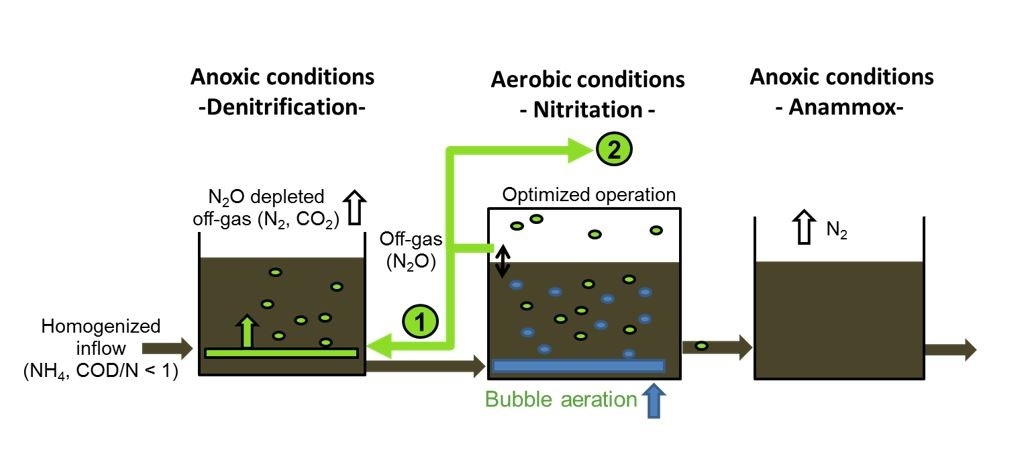MiNzE: Minimization of the CO2 footprint through adapted process development in process water treatment - Testing of the MiNzE process in submerged fixed beds
| Led by: | Dr.-Ing. Maike Beier |
| E-Mail: | freyschmidt@isah.uni-hannover.de |
| Team: | Arne Freyschmidt, M. Sc. |
| Year: | 2021 |
| Funding: | BMBF / KMU-innovativ |
| Duration: | 12/2018 - 05/2021 |



With regard to Germany's national climate target, a large number of municipalities are currently formulating regional climate targets. After CO2 emissions from transport, wastewater discharge and treatment is a major emitter in regional balancing due to its energy requirements (indirect CO2 emissions). In addition to the economic aspects of energy reduction, this results in a further driver for the implementation of energy-minimized processes in waste water treatment. The implementation of deammonification process as sidestream treatment of ammonium-rich wastewater is therefore increasingly being implemented by operators in recent years with a view to possible energy savings (60% aeration energy, no organic carbon demand and thus increased energy utilisation potential due to increased methane formation). It is often disregarded that, as a large number of research studies in the past decades have shown, the formation and subsequent emission of the greenhouse gas nitrous oxide with a 300-fold Global Warming Potential (GWP) as an intermediate / by-product of deammonification can far exceed the indirect CO2 emission reduction from electricity savings. The large-scale implementation of a deammonification process with targeted nitrous oxide depletion is not yet known.
At the Institute for Sanitary Engineering and Waste Management at Leibniz University Hannover, Faculty of Civil Engineering and Geodesy, a process for reducing nitrous oxide emissions from deammonification was developed on the basis of results from various research projects. The Minimized-Nitrousoxide-zero-Emission Concept (MiNzE) provides for a reduced nitrous oxide formation by optimized operating conditions. On the other hand, a reduced gas input during aeration enables a lower stripping of the formed laughing gas, which in turn enables a biological reduction of the laughing gas accumulated in the liquid phase.
Within the framework of the KMU-Innovativ programme of the Federal Ministry of Education and Research, the MiNzE process is being tested on a piloscale and further developed to market maturity in cooperation with DiMeR GmbH over a period of 2.5 years. With this innovative process, the young technology company from Hanover also aims to make a worldwide contribution to environmentally friendly wastewater treatment.













